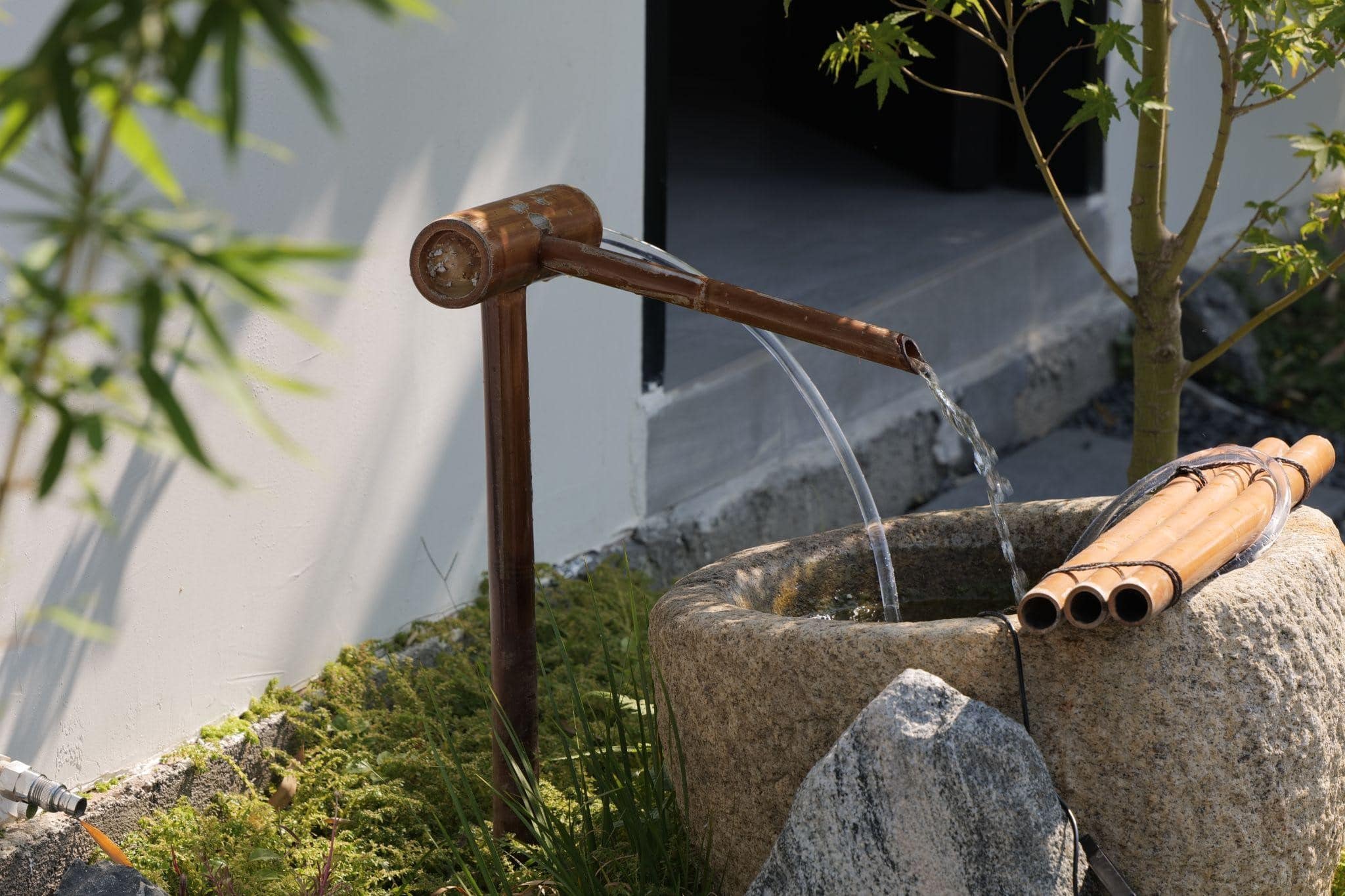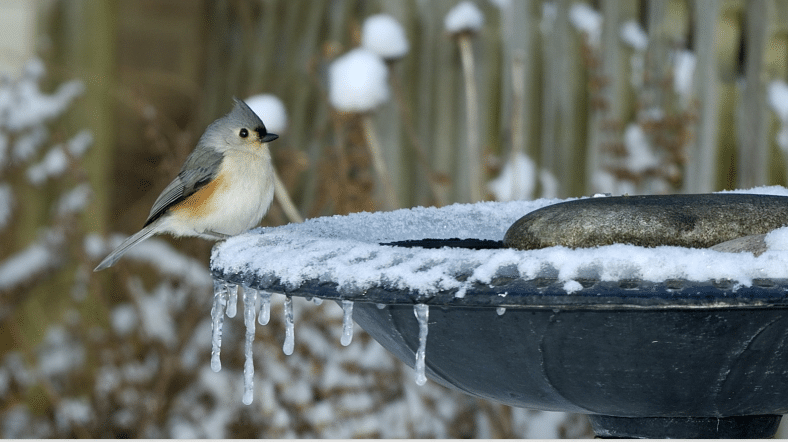When snow covers the ground and insects vanish, open water becomes a lifeline for birds. Yet even a shallow dish can freeze solid in a single night. In this guide you will find ten practical do’s and don’ts that stop a birdbath from freezing without fuss. Every tip is written in plain English, so you can put it to work right away whether you own a classic stone bowl, a heated bird bath, or something improvised from a flowerpot saucer.
Why Does a Birdbath Freeze So Fast?
- Shallow depth — Less water means quicker temperature drops.
- Wide surface area — More exposure to cold air and wind.
- Thermal mass — Concrete soaks up daytime warmth but also gives it off at night, speeding up ice formation.
- Location — A bath set in an open yard loses heat faster than one sheltered by shrubs.
Understanding these basics helps each do‑or‑don’t make sense instead of feeling like a random rule.
Tool Kit at a Glance
- Heated bird bath heater (submersible disk or wrap‑around ring)
- Heated bird bath for winter (a full unit with built‑in thermostat)
- Solar powered bird bath fountains (keep water moving so ice forms more slowly)
- Dark tray or rock to act as a mini heat sink
- Small, flat shovel for quick ice removal
You will not need every tool, but glancing through the list lets you plan ahead.
The 10 Do’s and Don’ts
Below are the ten most useful habits five you should adopt and five you should avoid at all costs. Follow them, and your birdbath will stay drinkable even when the thermometer dives.
1. DO Place the Bath in Morning Sun
East‑facing exposure means the very first rays begin thawing thin ice. By midday the sun has already added a few crucial degrees to the water. Even weak winter light makes a difference, especially for solar powered bird bath fountains kit that needs direct beams. If a permanent move is impossible, drag a portable bath onto the patio or prop up a reflective board to bounce sunlight onto the surface.
2. DON’T Fill to the Brim
It’s tempting to top the bowl, thinking “more water, more time before it freezes.” In reality, overflow soaks the rim, making ice build‑up around the edges. Birds can’t grip that slippery ring, and one hard freeze could crack a ceramic basin. Keep depth at 4–5 cm deep enough for a drink, shallow enough to warm quickly in daylight.
3.DO Add Movement With a Pump or Bubbling Stone
Moving water resists freezing by constantly breaking the forming ice sheet. A tiny 2‑watt pump, paired with solar powered bird bath fountains technology or a low‑voltage adapter, circulates just enough to keep a patch open. For bonus points, angle the discharge so it splashes onto a rock. Birds sip from the trickle without standing in icy water.
4. DON’T Use Salt, Glycerin, or Antifreeze
These additives indeed lower the freezing point, but they poison wildlife and nearby plants. Even small amounts harm birds’ kidneys and coat plumage with residue that hinders insulation. Stick to pure water and mechanical solutions. If you catch online advice promoting chemicals, scroll on by.
5. DO Install a Thermostatically Controlled Heater
A plug‑in heater that switches itself on at 0 °C is the single most effective tool in deep freezes. Modern units draw only 50–150 watts, less than a porch light and cost pennies per day. Submersible disks lie flat on the floor of the bowl, while a solar pond aerator ring clips under the rim. Both types keep water above freezing but below 10 °C, perfect for birds and energy bills.
6. DON’T Let Cords Lie Where Snowblowers or Pets Can Snag Them
Electric safety matters, even at low wattage. Bury outdoor‑rated cable in a shallow groove or thread it through PVC pipe. At the outlet, use a weatherproof cover. Simple precautions prevent costly replacements and remove a trip hazard for you when paths turn slick.
7. DO Offer Shelter From Arctic Winds
A windbreak slows evaporation and heat loss. Plant an evergreen shrub on the prevailing‑wind side or erect a small lattice fence. The structure should be far enough back about 60 cm to let birds spot stalking cats. Wind chill may be a human‑centric term, but in practice moving air saps heat from water fast.
8. DON’T Let Yesterday’s Ice Stay Put
New ice anchors to old ice and thickens twice as quickly. Each morning, chop or lift out frozen slabs with a plastic trowel. Avoid metal tools that can chip stone or glazed ceramic. If the ice is stubborn, tip out the chunk and refill with lukewarm tap water. The fresh refill resets the clock on freeze‑over.
9. DO Use Dark Rocks to Absorb Daytime Heat
Drop a few flat, dark river stones into the basin. They store solar warmth and release it slowly overnight. The rocks also give small birds a sure footing, encouraging them to drink without dunking their bellies. For large bowls, a brick painted matte black works wonders and costs nothing.
10. DON’T Skip Cleaning Just Because It’s Cold
Dirty water grows bacteria that spread sickness among already stressed winter birds. Take the bath indoors every two weeks, scrub with a stiff brush and mild dish soap, rinse well, and reinstall. If the bath is too heavy to carry, scrub in place using a diluted vinegar solution (1 part vinegar to 9 parts hot water). Rinse thoroughly so birds taste pure water, not salad dressing.

Putting It All Together: A One‑Day Winterizing Plan
- Morning (Sunlight Test)
Place the bath where it receives at least four hours of direct sun. Mark the turf so you can reposition quickly if needed. - Mid‑day (Hardware Install)
Fit your heated bird bath for winter or slip in a submersible disk heater. Bury the cord and protect the plug connection with a weatherproof box. - Early Afternoon (Rock Placement)
Set dark stones inside and adjust pump flow if using a fountain. Ensure splash lands back in the bowl, not onto the rim where it can freeze. - Late Afternoon (Windbreak Check)
Position a portable screen or existing shrubs to block prevailing winds. Trim any overhanging branches that might shed snow right into the basin. - Evening (First Freeze Patrol)
After sunset temperature drops, peek outside. If a skim of ice forms, note whether placement or heater settings need tweaking before bed.
Complete these steps once and you will only need short check‑ups through the season.

Final Thoughts: Keep Your Birdbath Ice-Free All Winter
Keeping a birdbath ice‑free is not about gadgets or jargon; it’s about simple, repeatable habits. Position the basin smartly, combine sun and shelter, add gentle heat when nature alone can’t cope, and stay diligent with cleaning.
Birds will reward you with vibrant winter color and cheerful song when the rest of the garden lies dormant. Follow these ten dos and don’ts, and freezing water will move from nagging headache to quick tick‑on‑a‑checklist freeing your time to enjoy wildlife rather than battling ice.







